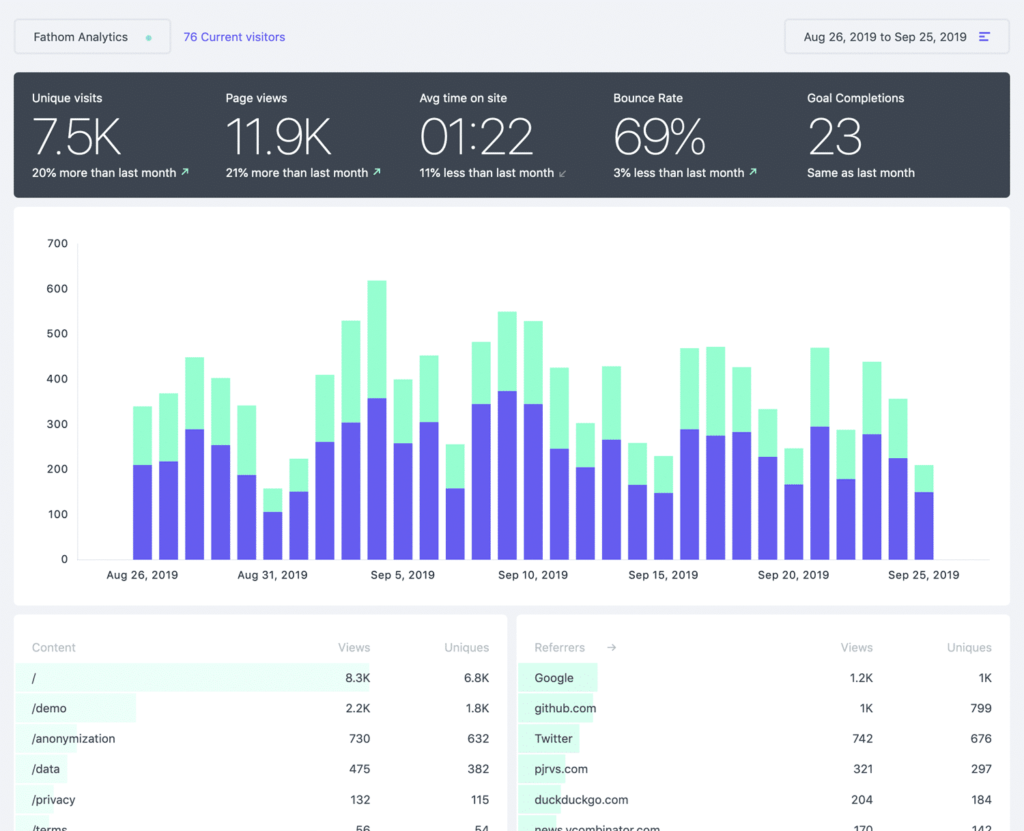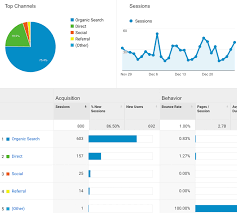Google Analytics is a powerful web analytics service offered by Google that tracks and reports website traffic. It has become a crucial tool for digital marketers, web developers, and businesses of all sizes. By leveraging the data provided by Google Analytics, insights into user behavior, website performance, and marketing effectiveness can be gained.
What is Google Analytics?
Google Analytics, launched in November 2005, is a service designed to track and report website traffic. It has since evolved into a comprehensive tool for measuring digital marketing ROI and understanding user interactions with websites. Through the use of cookies, user data is collected and analyzed, providing detailed insights into how visitors interact with a website.
How to Use Google Analytics
Setting Up Google Analytics
- Creating an Account: To use Google Analytics, a Google account is required. After logging in, a new Google Analytics account can be created by visiting the Google Analytics website and clicking on the “Start for free” button.
- Setting Up a Property: Within the account, a property (which represents the website or app to be tracked) must be created. Information such as the website name, URL, industry category, and time zone must be provided.
- Installing the Tracking Code: A tracking code is generated by Google Analytics for the created property. This code must be added to every page of the website that is to be tracked. This is typically done by inserting the code into the header section of the website’s HTML.
- Configuring Goals and Events: Goals can be set up to track specific actions users take on the website, such as completing a purchase or signing up for a newsletter. Events can also be configured to track user interactions like button clicks or video plays.
Navigating Google Analytics
- Dashboard Overview: The dashboard provides an overview of key metrics such as the number of users, sessions, bounce rate, and average session duration. Customizable widgets can be added to the dashboard to display specific data of interest.
- Audience Reports: These reports provide insights into the characteristics of website visitors, including demographics, interests, geographical location, and behavior. Understanding the audience helps tailor content and marketing strategies.
- Acquisition Reports: These reports reveal how visitors arrive at the website, whether through organic search, paid advertising, social media, direct traffic, or referral links. The effectiveness of different marketing channels can be assessed using these reports.
- Behavior Reports: These reports show how users interact with the website, including page views, landing pages, exit pages, and site speed. User flow visualization can also be used to understand the paths visitors take through the site.
- Conversion Reports: These reports track the completion of goals set up in Google Analytics. Conversion rates, goal completions, and e-commerce transactions (if applicable) are displayed, providing insights into the effectiveness of marketing and sales efforts.
Pros of Google Analytics
- Comprehensive Data Collection: A vast amount of data on website traffic, user behavior, and marketing effectiveness can be collected and analyzed. Detailed insights into user interactions with the website are provided.
- Free to Use: The basic version of Google Analytics is free, making it accessible to businesses of all sizes. Advanced features and integrations are available in the paid version, Google Analytics 360.
- Customizable Reports: Reports can be tailored to specific needs by using customizable widgets and segments. Data can be filtered and drilled down to uncover insights that are relevant to specific business goals.
- Integration with Other Tools: Google Analytics can be integrated with other Google services such as Google Ads, Google Search Console, and Google Tag Manager. This allows for a more comprehensive view of marketing efforts and website performance.
- Real-Time Data: Real-time data on user activity can be accessed, allowing for immediate insights and quick responses to changes in traffic patterns or user behavior.
- Advanced Features: Features such as custom dimensions, custom metrics, and data import functionality are available. Advanced analysis techniques can be applied to gain deeper insights.
Cons of Google Analytics
- Complexity: The vast amount of data and numerous features can be overwhelming for beginners. A learning curve is required to fully utilize the tool and understand the reports.
- Data Privacy Concerns: Data privacy issues have been raised due to the extensive data collection practices. Compliance with data protection regulations, such as GDPR, must be ensured.
- Sampling Issues: When large datasets are analyzed, Google Analytics may use sampling to speed up the processing of reports. This can lead to less accurate data, especially for websites with high traffic volumes.
- Limited Data Retention: The default data retention period for Google Analytics is 26 months. Historical data may be lost if it is not exported and stored externally.
- Dependency on JavaScript: The tracking code relies on JavaScript. If users disable JavaScript in their browsers or use ad-blocking software, data may not be accurately tracked.
- Limits in the Free Version: The free version of Google Analytics has limitations, such as a maximum of 10 million hits per month and restricted access to advanced features. Large enterprises may require the paid version, Google Analytics 360, for their needs.
Log: Top 10 Alternatives to Google Analytics

In the ever-evolving landscape of digital analytics, alternatives to Google Analytics have been increasingly sought after by businesses and web developers. Reasons for this trend include concerns over data privacy, the need for more specialized features, and preferences for different user interfaces. Presented below are the top 10 alternatives to Google Analytics, highlighting their unique features and advantages.
- Matomo
Formerly known as Piwik, Matomo has been widely recognized as a robust alternative to Google Analytics. This open-source platform can be hosted on one’s own servers, which grants complete control over data. It is particularly valued for its emphasis on data privacy and compliance with GDPR regulations. A variety of customizable plugins is offered by Matomo, enabling tailored solutions for different analytical needs. Furthermore, its user-friendly interface and comprehensive reporting capabilities make it a preferred choice for many.
- Adobe Analytics
Adobe Analytics, a part of the Adobe Experience Cloud, is often chosen by large enterprises due to its advanced features and integration capabilities. Complex data analysis is facilitated through sophisticated tools, including predictive analytics and deep segmentation. Additionally, real-time data processing and extensive customization options have positioned Adobe Analytics as a powerful tool for detailed insights and strategic decision-making.
- Mixpanel
Mixpanel is distinguished by its focus on user interactions and event-based tracking, making it a popular choice for mobile and web applications. Detailed insights into user behavior are provided, enabling businesses to understand the customer journey better. Advanced cohort analysis, A/B testing, and engagement tracking are among the features that have garnered praise for Mixpanel. Its intuitive interface and robust reporting tools are appreciated for simplifying complex data analysis.
- Amplitude
Amplitude, another strong competitor in the analytics space, is designed to track user behavior across digital products. The platform’s strength lies in its ability to provide granular insights into user actions and retention metrics. The customer journey can be visualized in detail, facilitating better product development and user engagement strategies. Amplitude’s integration with various other tools and its scalable nature have made it an attractive option for growing businesses.
- Heap
Heap is an analytics tool that has revolutionized the traditional event tracking process by automatically capturing all user interactions without requiring manual tagging. This automatic data collection feature ensures comprehensive data coverage, which is crucial for in-depth analysis. Heap’s ability to retroactively analyze historical data has been particularly beneficial for understanding long-term trends and user behavior patterns. Its simple setup and powerful analytics capabilities are widely appreciated.
- Kissmetrics
Kissmetrics is tailored towards understanding and optimizing the customer journey. The platform focuses on tracking individual user behavior across multiple devices and sessions, providing detailed insights into customer engagement and conversion paths. Behavioral analytics and detailed segmentation are facilitated by Kissmetrics, which helps in creating targeted marketing campaigns and improving overall customer experience. Its integration with various marketing tools further enhances its utility.
- Clicky
Clicky is preferred by many small to medium-sized businesses for its real-time analytics capabilities. The platform provides immediate insights into website traffic, user behavior, and engagement metrics. Clicky’s user-friendly interface and straightforward setup process are often highlighted as key benefits. Additionally, features like heatmaps, uptime monitoring, and detailed visitor logs have contributed to its popularity among users seeking real-time data analysis.
- Plausible
Plausible Analytics has gained attention as a privacy-focused alternative to Google Analytics. This lightweight and open-source platform does not use cookies, which aligns well with stringent data privacy regulations. Plausible’s simplicity and ease of use are appreciated, particularly by small businesses and individual website owners. Despite its minimalist approach, essential metrics and actionable insights are effectively provided by Plausible.
- Fathom
Fathom Analytics offers a clean and straightforward approach to website analytics, prioritizing user privacy. Like Plausible, Fathom does not use cookies, making it compliant with GDPR and other data protection laws. The platform’s simplicity does not compromise on providing essential insights into website traffic and user behavior. Quick setup and easy-to-understand reports are frequently cited as major advantages of Fathom.
- Woopra
Woopra specializes in real-time customer journey analytics, making it an excellent choice for businesses that prioritize customer experience. The platform offers detailed user profiles, real-time tracking, and comprehensive segmentation capabilities. Integration with various customer relationship management (CRM) and marketing automation tools is supported by Woopra, enhancing its utility for businesses looking to optimize their customer interactions and engagement strategies. Its focus on real-time data and actionable insights has made Woopra a valuable tool for many organizations.
In conclusion, the alternatives to Google Analytics each offer unique features and benefits that cater to different analytical needs and preferences. Whether the focus is on data privacy, user behavior analysis, real-time tracking, or ease of use, these ten platforms provide viable solutions for businesses seeking to enhance their digital analytics capabilities.
Conclusion
Google Analytics is a powerful tool for understanding website traffic and user behavior. By setting up and configuring Google Analytics, detailed insights into website performance and marketing effectiveness can be gained. While there are some complexities and limitations associated with the tool, the benefits of comprehensive data collection, customization options, and integration with other Google services make it an essential resource for digital marketers and businesses. With careful analysis and interpretation of the data provided by Google Analytics, informed decisions to improve website performance and achieve business goals can be made.










